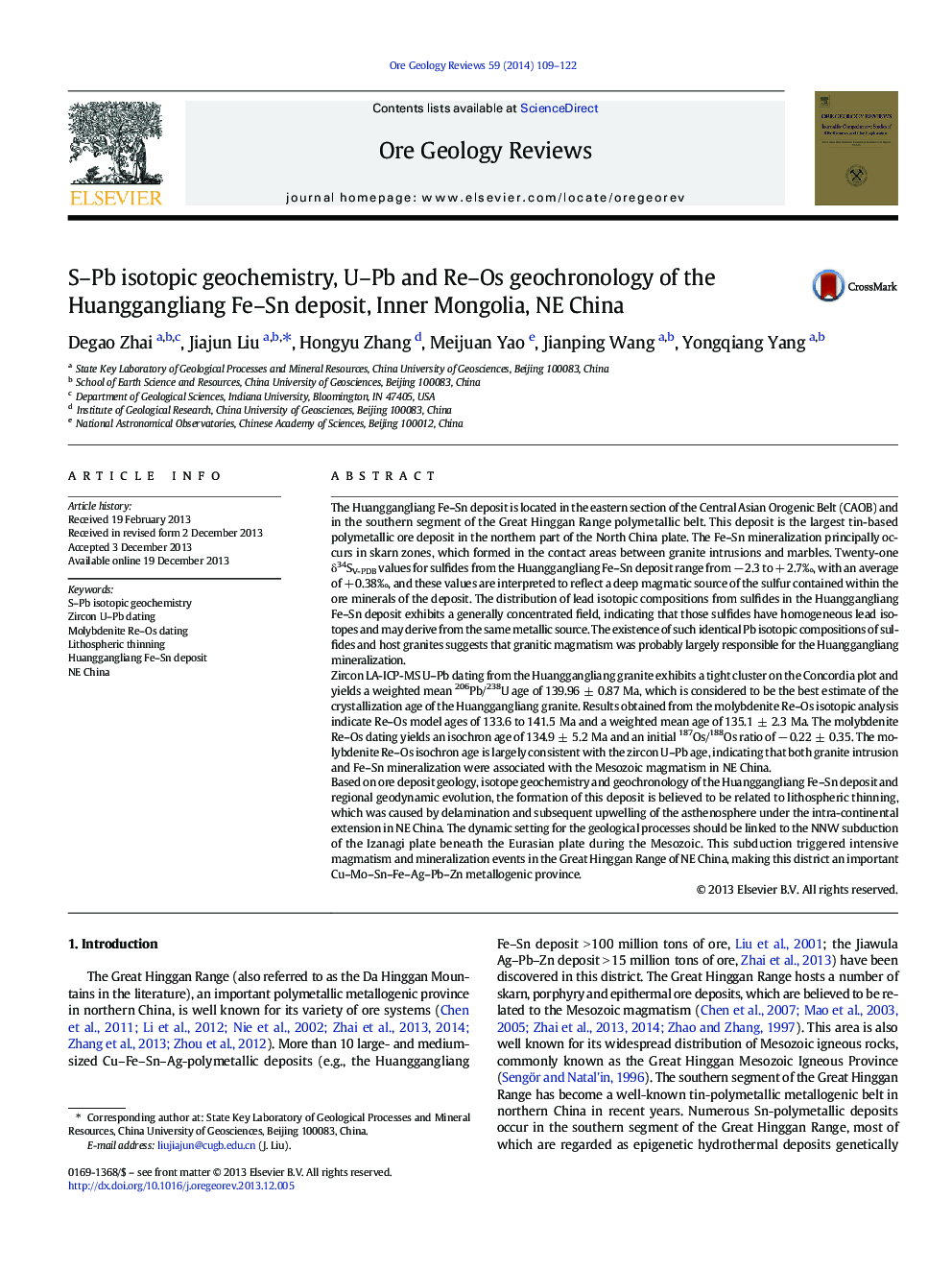| کد مقاله | کد نشریه | سال انتشار | مقاله انگلیسی | نسخه تمام متن |
|---|---|---|---|---|
| 4697484 | 1637244 | 2014 | 14 صفحه PDF | دانلود رایگان |

• S and Pb isotopes indicate granitic magmatism was responsible for mineralization.
• Zircon U–Pb dating and molybdenite Re–Os dating are well consistent with each other.
• Mineralization was related to lithospheric thinning caused by Mesozoic subduction.
The Huanggangliang Fe–Sn deposit is located in the eastern section of the Central Asian Orogenic Belt (CAOB) and in the southern segment of the Great Hinggan Range polymetallic belt. This deposit is the largest tin-based polymetallic ore deposit in the northern part of the North China plate. The Fe–Sn mineralization principally occurs in skarn zones, which formed in the contact areas between granite intrusions and marbles. Twenty-one δ34SV-PDB values for sulfides from the Huanggangliang Fe–Sn deposit range from − 2.3 to + 2.7‰, with an average of + 0.38‰, and these values are interpreted to reflect a deep magmatic source of the sulfur contained within the ore minerals of the deposit. The distribution of lead isotopic compositions from sulfides in the Huanggangliang Fe–Sn deposit exhibits a generally concentrated field, indicating that those sulfides have homogeneous lead isotopes and may derive from the same metallic source. The existence of such identical Pb isotopic compositions of sulfides and host granites suggests that granitic magmatism was probably largely responsible for the Huanggangliang mineralization.Zircon LA-ICP-MS U–Pb dating from the Huanggangliang granite exhibits a tight cluster on the Concordia plot and yields a weighted mean 206Pb/238U age of 139.96 ± 0.87 Ma, which is considered to be the best estimate of the crystallization age of the Huanggangliang granite. Results obtained from the molybdenite Re–Os isotopic analysis indicate Re–Os model ages of 133.6 to 141.5 Ma and a weighted mean age of 135.1 ± 2.3 Ma. The molybdenite Re–Os dating yields an isochron age of 134.9 ± 5.2 Ma and an initial 187Os/188Os ratio of − 0.22 ± 0.35. The molybdenite Re–Os isochron age is largely consistent with the zircon U–Pb age, indicating that both granite intrusion and Fe–Sn mineralization were associated with the Mesozoic magmatism in NE China.Based on ore deposit geology, isotope geochemistry and geochronology of the Huanggangliang Fe–Sn deposit and regional geodynamic evolution, the formation of this deposit is believed to be related to lithospheric thinning, which was caused by delamination and subsequent upwelling of the asthenosphere under the intra-continental extension in NE China. The dynamic setting for the geological processes should be linked to the NNW subduction of the Izanagi plate beneath the Eurasian plate during the Mesozoic. This subduction triggered intensive magmatism and mineralization events in the Great Hinggan Range of NE China, making this district an important Cu–Mo–Sn–Fe–Ag–Pb–Zn metallogenic province.
Figure optionsDownload as PowerPoint slide
Journal: Ore Geology Reviews - Volume 59, June 2014, Pages 109–122